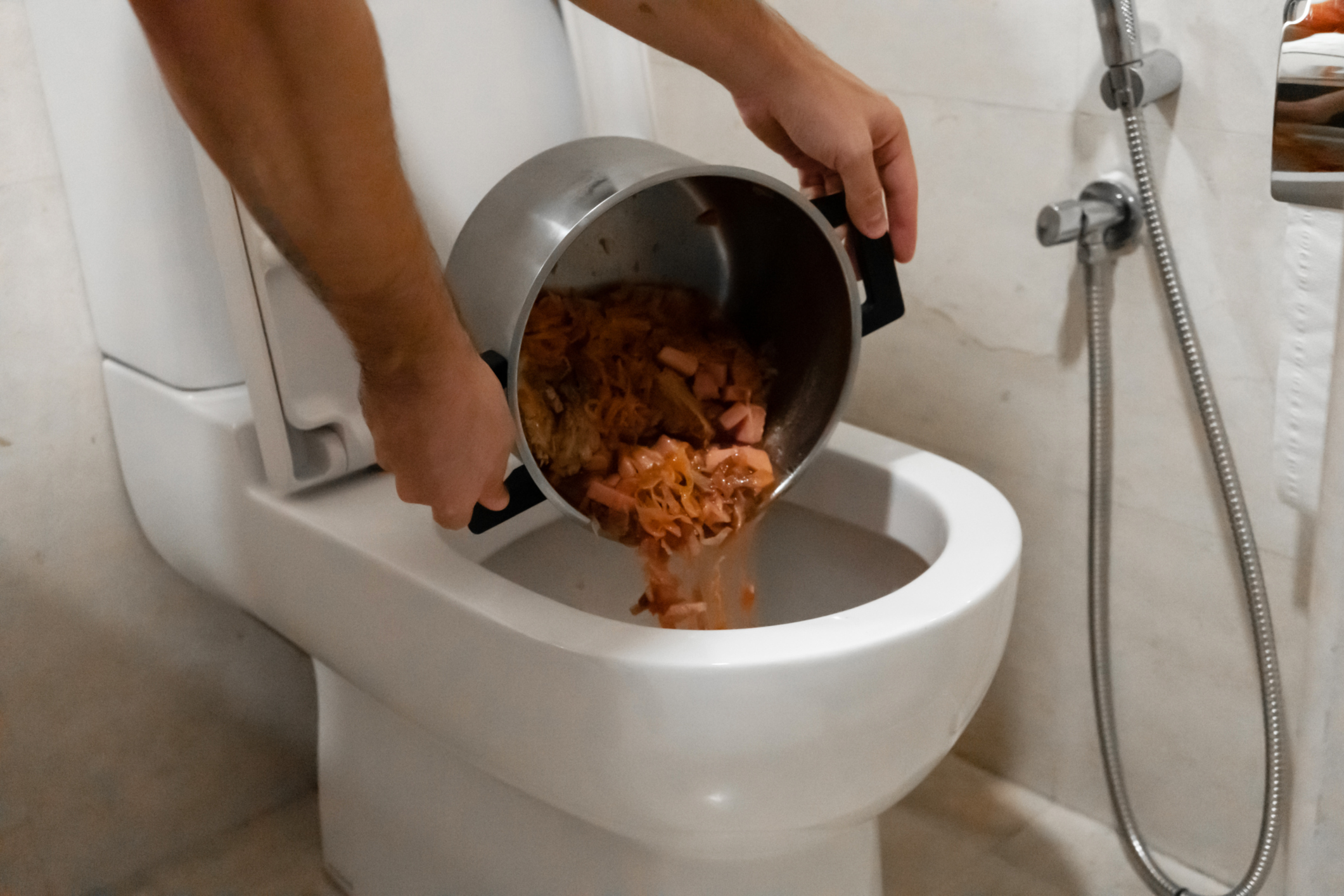They are making a number of good points regarding Think Twice Before Flushing Food Down Your Toilet overall in this content following next.

Intro
Many people are commonly confronted with the predicament of what to do with food waste, especially when it pertains to leftovers or scraps. One usual concern that develops is whether it's okay to flush food down the bathroom. In this post, we'll look into the reasons that people might think about flushing food, the consequences of doing so, and alternative methods for proper disposal.
Reasons why people might consider flushing food
Lack of awareness
Some individuals might not understand the possible damage triggered by flushing food down the toilet. They might erroneously think that it's a harmless practice.
Convenience
Purging food down the bathroom may seem like a fast and easy remedy to throwing away unwanted scraps, especially when there's no neighboring trash can readily available.
Negligence
In many cases, individuals may merely pick to flush food out of large idleness, without thinking about the consequences of their actions.
Consequences of flushing food down the toilet
Ecological impact
Food waste that winds up in waterways can add to contamination and harm water environments. Additionally, the water made use of to purge food can strain water sources.
Pipes issues
Flushing food can bring about blocked pipelines and drains pipes, causing expensive plumbing repair services and inconveniences.
Kinds of food that must not be purged
Coarse foods
Foods with coarse appearances such as celery or corn husks can get tangled in pipelines and create clogs.
Starchy foods
Starchy foods like pasta and rice can absorb water and swell, resulting in blockages in pipes.
Oils and fats
Greasy foods like bacon or cooking oils ought to never be flushed down the toilet as they can solidify and cause blockages.
Proper disposal methods for food waste
Using a garbage disposal
For homes equipped with garbage disposals, food scraps can be ground up and purged with the plumbing system. Nonetheless, not all foods are suitable for disposal in this way.
Recycling
Particular food packaging materials can be recycled, minimizing waste and decreasing environmental impact.
Composting
Composting is an environmentally friendly way to deal with food waste. Organic materials can be composted and utilized to enhance soil for horticulture.
The value of appropriate waste management
Reducing ecological injury
Correct waste management methods, such as composting and recycling, aid decrease pollution and protect natural deposits for future generations.
Protecting pipes systems
By staying clear of the method of flushing food down the toilet, home owners can stop costly pipes repair work and maintain the honesty of their plumbing systems.
Verdict
In conclusion, while it might be tempting to purge food down the commode for ease, it is very important to understand the potential consequences of this activity. By adopting appropriate waste monitoring practices and dealing with food waste properly, people can contribute to healthier pipes systems and a cleaner atmosphere for all.
FLUSH FOOD DOWN THE TOILET?
FLUSHING FOOD CAN CAUSE BLOCKED DRAINS IN YOUR HOME
All of the plumbing fixtures in your home are connected to the same sewer pipe outside of your home. This outdoor sewer pipe is responsible for transporting all the wastewater from your home to the Council sewer mains. Even small pieces of food that go down the kitchen sink can cause problems for your sewer. It should therefore be obvious that flushing larger bits of food, such as meat, risks a clog in either the toilet itself or the sewer pipes. Flushing greasy food is even more problematic because oil coagulates when it cools, coating the interior lining of your pipes.
THE TOILET IS NOT A BIN
Food isn’t the only thing that people shouldn’t be flushing down the toilet. People use the toilet to dispose of all kinds of things such as tampons, makeup wipes, dental floss, kitty litter and even underwear. Water goes to great lengths to educate residents about the high costs and stress placed on wastewater treatment systems simply from people flushing the wrong stuff down the toilet. It costs taxpayers millions of dollars each year, and homeowners thousands in blocked drain repairs.
FLUSHING FOOD IS A WASTE OF WATER
Flushing food is a waste of our most precious resource - water. In June this year Level 1 water restrictions were introduced to protect water supply from drought conditions. Much of New South Wales continues to be affected by prolonged drought with recent figures revealing up to 97 per cent of the state remains in drought. Depending on whether you have a single or dual flush toilet, every single flush uses between five and 11 litres of water. In the current climate this is a huge amount of water to be wasting on flushing food that should be placed in the bin (or better yet, the compost).
https://www.jabplumbingsolutions.com.au/blog/can-you-flush-food-down-the-toilet

As an enthusiastic person who reads on Flushing Food Down the Toilet?, I imagined sharing that excerpt was beneficial. Kindly take the time to promote this blog posting if you liked it. Thank-you for your time spent reading it.
Here